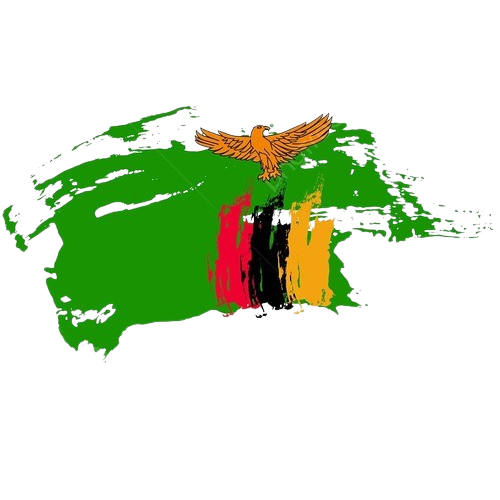How to Display All Registered Users in Social Media Android App?

This is the Part 8 of “Build a Social Media App on Android Studio” tutorial, and we are going to cover the following functionalities in this article:
- We are going to Show all the Registered Users of our App.
- We are going to show the list of users in UsersFragment.
Step By Step Implementation
Step 1: Create a new java class
Working with the ModelUsers.java file. Created this activity to initialize the key so that we can retrieve the value of the key later.
Java
package com.example.socialmediaapp; public class ModelUsers { String name; public ModelUsers() { } String onlineStatus; String typingTo; public String getName() { return name; } public void setName(String name) { this.name = name; } public String getTypingTo() { return typingTo; } public void setTypingTo(String typingTo) { this.typingTo = typingTo; } public String getEmail() { return email; } public void setEmail(String email) { this.email = email; } public String getImage() { return image; } public void setImage(String image) { this.image = image; } public String getUid() { return uid; } public void setUid(String uid) { this.uid = uid; } public ModelUsers(String name, String onlineStatus, String typingTo, String email, String image, String uid) { this.name = name; this.onlineStatus = onlineStatus; this.typingTo = typingTo; this.email = email; this.image = image; this.uid = uid; } String email; String image; String uid;} |
Step 2: Create another new java class
Working with the AdapterUsers.java file.
Java
package com.example.socialmediaapp; import android.content.Context;import android.view.LayoutInflater;import android.view.View;import android.view.ViewGroup;import android.widget.TextView; import androidx.annotation.NonNull;import androidx.recyclerview.widget.RecyclerView; import com.bumptech.glide.Glide;import com.google.firebase.auth.FirebaseAuth; import java.util.List; import de.hdodenhof.circleimageview.CircleImageView; public class AdapterUsers extends RecyclerView.Adapter<AdapterUsers.MyHolder> { Context context; FirebaseAuth firebaseAuth; String uid; public AdapterUsers(Context context, List<ModelUsers> list) { this.context = context; this.list = list; firebaseAuth = FirebaseAuth.getInstance(); uid = firebaseAuth.getUid(); } List<ModelUsers> list; @NonNull @Override public MyHolder onCreateViewHolder(@NonNull ViewGroup parent, int viewType) { View view = LayoutInflater.from(parent.getContext()).inflate(R.layout.row_users, parent, false); return new MyHolder(view); } @Override public void onBindViewHolder(@NonNull MyHolder holder, final int position) { final String hisuid = list.get(position).getUid(); String userImage = list.get(position).getImage(); String username = list.get(position).getName(); String usermail = list.get(position).getEmail(); holder.name.setText(username); holder.email.setText(usermail); try { Glide.with(context).load(userImage).into(holder.profiletv); } catch (Exception e) { } } @Override public int getItemCount() { return list.size(); } class MyHolder extends RecyclerView.ViewHolder { CircleImageView profiletv; TextView name, email; public MyHolder(@NonNull View itemView) { super(itemView); profiletv = itemView.findViewById(R.id.imagep); name = itemView.findViewById(R.id.namep); email = itemView.findViewById(R.id.emailp); } }} |
Step 3: Working with the fragment_user.xml file
Navigate to the app > res > layout > fragment_user.xml and add the below code to that file. Below is the code for the fragment_user.xml file.
XML
<?xml version="1.0" encoding="utf-8"?><FrameLayout android:layout_width="match_parent" android:layout_height="match_parent" tools:context=".UsersFragment"> <!-- TODO: Update blank fragment layout --> <androidx.recyclerview.widget.RecyclerView android:id="@+id/recyclep" android:layout_width="match_parent" android:layout_height="match_parent" /> </FrameLayout> |
Step 4: Working with the row_users.xml file
Create a new layout resource file and name the file as row_users. Below is the code for the row_users.xml file.
XML
<?xml version="1.0" encoding="utf-8"?><androidx.cardview.widget.CardView android:layout_width="match_parent" android:layout_height="wrap_content" android:orientation="vertical" app:cardBackgroundColor="@color/colorWhite" app:cardCornerRadius="2dp" app:cardElevation="2dp" app:cardUseCompatPadding="true" app:contentPadding="3dp"> <LinearLayout android:layout_width="match_parent" android:layout_height="wrap_content" android:orientation="horizontal"> <de.hdodenhof.circleimageview.CircleImageView android:id="@+id/imagep" android:layout_width="70dp" android:layout_height="70dp" android:src="@drawable/profile_image" /> <LinearLayout android:layout_width="match_parent" android:layout_height="wrap_content" android:layout_marginLeft="5dp" android:layout_weight="1" android:orientation="vertical"> <TextView android:id="@+id/namep" android:layout_width="match_parent" android:layout_height="wrap_content" android:text="Person NAme" android:textColor="@color/colorBlack" android:textSize="18sp" /> <TextView android:id="@+id/emailp" android:layout_width="match_parent" android:layout_height="wrap_content" android:text="Person Email" android:textColor="@color/colorBlack" /> </LinearLayout> </LinearLayout> </androidx.cardview.widget.CardView> |
Step 5: Working with the UsersFragmnet.java file
Go to the UsersFragmnet.java file and refer to the following code. Below is the code for the UsersFragmnet.java file.
Java
package com.example.socialmediaapp; import android.os.Bundle;import android.view.LayoutInflater;import android.view.View;import android.view.ViewGroup; import androidx.annotation.NonNull;import androidx.annotation.Nullable;import androidx.fragment.app.Fragment;import androidx.recyclerview.widget.LinearLayoutManager;import androidx.recyclerview.widget.RecyclerView; import com.google.firebase.auth.FirebaseAuth;import com.google.firebase.auth.FirebaseUser;import com.google.firebase.database.DataSnapshot;import com.google.firebase.database.DatabaseError;import com.google.firebase.database.DatabaseReference;import com.google.firebase.database.FirebaseDatabase;import com.google.firebase.database.ValueEventListener; import java.util.ArrayList;import java.util.List; /** * A simple {@link Fragment} subclass. */public class UsersFragment extends Fragment { RecyclerView recyclerView; AdapterUsers adapterUsers; List<ModelUsers> usersList; FirebaseAuth firebaseAuth; public UsersFragment() { // Required empty public constructor } @Override public View onCreateView(LayoutInflater inflater, ViewGroup container, Bundle savedInstanceState) { // Inflate the layout for this fragment View view = inflater.inflate(R.layout.fragment_users, container, false); recyclerView = view.findViewById(R.id.recyclep); recyclerView.setHasFixedSize(true); recyclerView.setLayoutManager(new LinearLayoutManager(getActivity())); usersList = new ArrayList<>(); firebaseAuth = FirebaseAuth.getInstance(); getAllUsers(); return view; } private void getAllUsers() { final FirebaseUser firebaseUser = FirebaseAuth.getInstance().getCurrentUser(); DatabaseReference reference = FirebaseDatabase.getInstance().getReference("Users"); reference.addValueEventListener(new ValueEventListener() { @Override public void onDataChange(@NonNull DataSnapshot dataSnapshot) { usersList.clear(); for (DataSnapshot dataSnapshot1 : dataSnapshot.getChildren()) { ModelUsers modelUsers = dataSnapshot1.getValue(ModelUsers.class); if (modelUsers.getUid() != null && !modelUsers.getUid().equals(firebaseUser.getUid())) { usersList.add(modelUsers); } adapterUsers = new AdapterUsers(getActivity(), usersList); recyclerView.setAdapter(adapterUsers); } } @Override public void onCancelled(@NonNull DatabaseError databaseError) { } }); } @Override public void onCreate(@Nullable Bundle savedInstanceState) { setHasOptionsMenu(true); super.onCreate(savedInstanceState); }} |
Output:
For all the drawable file used in this article please refer to this link: https://drive.google.com/drive/folders/1M_knOH_ugCuwSP5nkYzeD4dRp-Honzbe?usp=sharing
Below is the file structure after performing these operations:






